Want to know more about violin parts and accessories?
In this article, I’ll give you a quick insight into their function, maintenance, and replacement.
The longevity of the violin depends on the quality of its tonewood, violin fingerboard, tailpiece, and fine tuners that are its important parts. Also, you should have accessories for the instrument such as violin humidifier, rosin, and carrying case that protects the instrument.
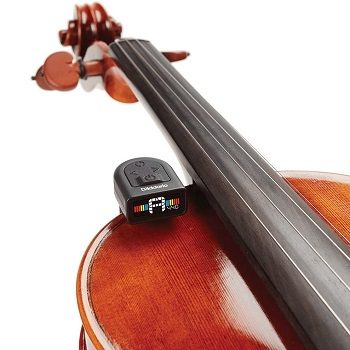
Violin Parts And Accessories Near Me
The best offer can be found at online retailers because they sell a wide range of different models for each part and accessories. You can also find them at brands’ official websites or in local stores for instruments.
Parts That Need Frequent Replacement
Tailpiece and strings are most often replaced because they’re affected by playing the violin. Lower-quality strings tend to break, however, strings on any violin should be replaced every 9 to 12 months for optimal performance. There are many tutorial videos on replacing the string. You can also give the violin to luthiers that are repairing and crafting violins.
Violin Parts
Violin Strings
The strings and tonewood determine the quality of the sound. Usually, the violin has 4 strings that are tuned a fifth apart to the G-D-A-E notes from lowest to highest. Strings are made from stainless steel of different strength, nylon, or other synthetic material or natural materials such as animal guts.
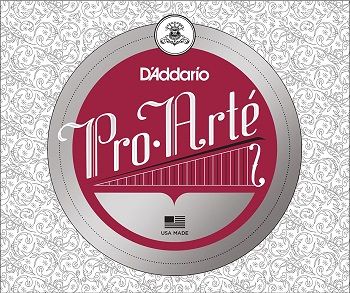
The natural and synthetic materials produce better sound in comparison to steel, and they’re more long-lasting. Low-quality strings are easier to break when tuning the violin, and less resistant to humidity and temperature changes.
Every model should come with an additional set of strings because even high-quality ones need to be replaced every 9-12 months for keeping the quality of the sound. The length of the strings must be suitable for the size scale of the violin. The string sets aren’t expensive.
Violin Fine Tuners
Fine tuners on violin can be found at the tailpiece and they’re used, together with violin pegs for tuning the strings to correct sound. Considering their number and position there are different violin types available on the market such as 4 fine tuners violin, one fine tuner violin, violin with built-in tuners, and models without tuners.
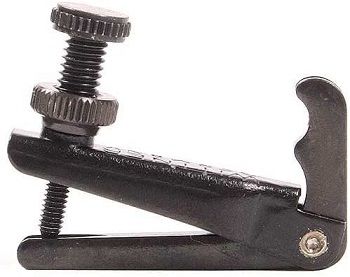
Violin fine tuners for sale aren’t very expensive and they are useful to have in case of the original tuner breaks because of too strong string tuning. When searching for the best violin fine tuners you should compare different brands and check the tuners’ size and compatibility.
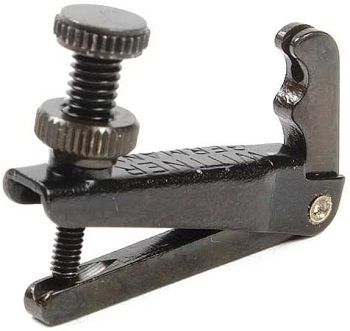
The tuners can be universal and therefore suitable for any string type. However, some are more specific and can be used only with steel string or only with natural fiber string. Also, different tuners are available considering the size of your violin.
Violin Fingerboard
The fingerboard is a layer of wood that’s glued on the violin neck that’s connecting the violin body with the violin scroll. The scroll of the violin holds pegs that are used for tuning the strings that are extended across the fingerboard between the scroll and tailpiece while being elevated by the violin bridge.

Bridge, scroll, and fingerboard are often made of some type of wood. The most common wood type for fingerboard is dark ebony. However, some models have maple, pear, or cherry fingerboard.
The instrument is played by using the bow to strung the strings and by pushing the strings on the fingerboard with the fingers. By pushing the strings, the violinist is, therefore, changing the pitch of each string. When the fingerboard is broken, the playing could be less efficient and harder, so it’s important to fix it.
Violin Tailpiece
Violin tailpiece is often made from ebony, but it can be also made from other types of wood or alloy. Its function is to hold a different number of fine-tuners that are used for tuning the strings to the right sound.
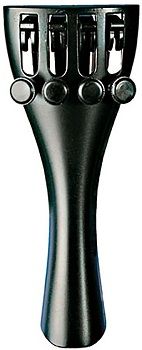
One of the best violin tailpieces can be damaged, so maybe you’ll have to replace it with a new one. This part is universal, but you can always try to find the replacement part that’s the same as an original tailpiece. However, you must check if the part is suitable for your violin’s size.
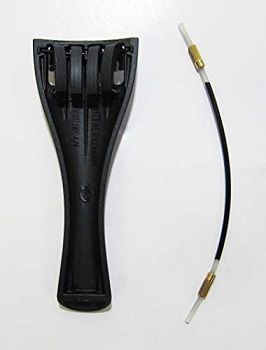
It holds the strings at the bottom of the violin, close to the violinist’s chin. The tailpiece is connected to the violin body with the endpin. Endip is a small button that can be found at the bottom of the violin.
Violin Accessories
Violin Bow
The violin often comes with a suitable bow, but sometimes you need to buy it separately or search for the new one because the original has broken. Different models are available considering the material and size of the bow.
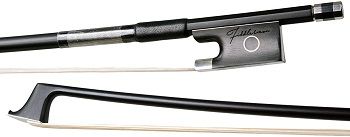
The bow plates can be made from wood, fiberglass and carbon fiber, etc. The wooden and carbon fiber ones are the most common. The most common wood for bow making is Brazilwood. Pernambuco bows are very rare because the tree species became endangered.

Brazilwood bows are priced between $50 and $200, while more expensive types can be priced up to $1500. The fibers of the bow are made from horsehair. You must check if the bow is suitable for the violin size. Also consider it’s weight, balance, and shape.
Violin Rosin
The rosin is made of the chemical called resin that is plugged from the pine trees. Manufacturers are heating the resin that melts and after that, they add other chemicals to the mix. Then it’s cooled, harden, and ready to use.
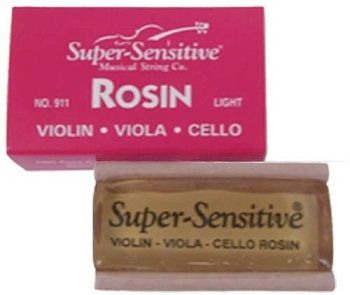
It’s often included in the package with violins because it’s used to maintain the bow hair. But what’s more important, the rosin is sticky and therefore it creates friction between bow and strings and helps the bow to grip the strings and therefore to create a vibration and sound.
There are light and dark rosins. The light ones are less sticky, while the dark ones are more sticky. You should buy rosin specifically made for violin and then use it after every 4 to 6 hours of continuous playing. Therefore it’s irreplaceable accessories for any beginner, student, intermediate or professional.
Violin Humidifier
Rosin protects the strings and bow while allowing the sound, while the violin humidifier protects the whole violin body and ensures the longevity of the instrument. You have to put them in the instrument and they’re releasing the moisture in the air.
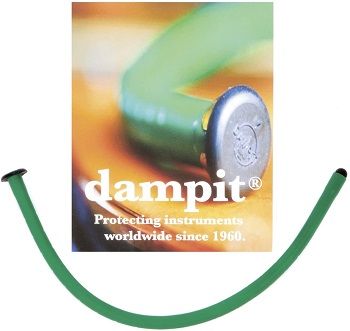
That’s very important because too dry instruments could get damaged, and that’s especially common during the summer months when the violin can lose a lot of the humidity. That causes lower sound efficiency, shrinking, damages in the violin tonewood, etc.
Therefore, the violin humidifier is one of the most important accessories to have with the instrument. Using the humidifier is simple. Leave it to soak in the water, then wipe it with the cloth and put in the instrument through the f-hole.
Violin Microphone
Violin mic is an important accessory when playing on concerts or somewhere else where you need a louder violin sound. However, it’s used often on electric violins that need to be plugged with aux cable to the amplifier to get the sound.
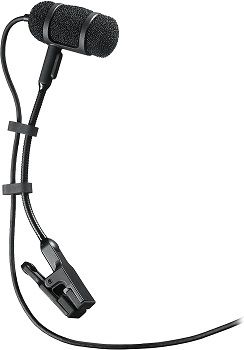
When buying a violin microphone, make sure it’s flexible and easy to put on the instrument. The clip of the best violin microphone will be shock-absorbant and gentle to the tonewood or metal exterior.
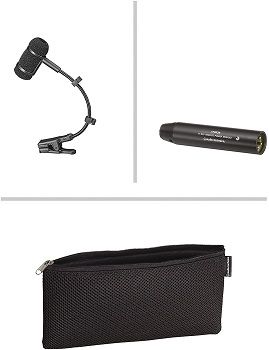
Also, other technical specifications are important such as frequency response and sensitivity. The microphone should reproduce a wide range of violin’s frequencies with a rolled-off high-frequency response. The mic should be sensitive enough to capture the full violin sound.
Violin Digital Tuner
There are two main types of tuners: clip-on and chromatic tuners. The clip-on tuner types need to be attached to the string you’ll about to tune. The digital screen of the tuner shows the current string pitch and you need to tune the string to correct tone.
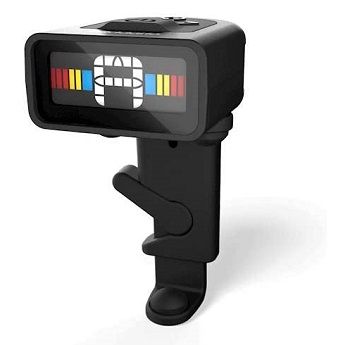
The chromatic tuners don’t have to be clipped on the violin. They produce a sound to which you need to tune the strings of the violin. It’s very user-friendly when these devices are included with your violin, especially for the beginners.
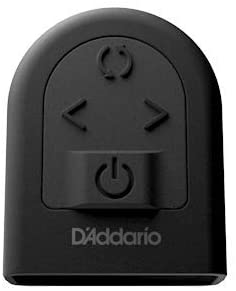
The strings can be tuned with fine-tuners and pegs that are already mentioned in the violin parts. However,e slight change in their position can cause big changes in the string’s pitch. So it can be hard for beginners to tune their violins without the help of the tuner.
Violin Carrying Case
The carrying case is one of the accessories you’ll always get with the violin, at least you should get because it’s protecting your violin the most. You’ll travel with your instrument for sure, so you need to have a protective box for it.
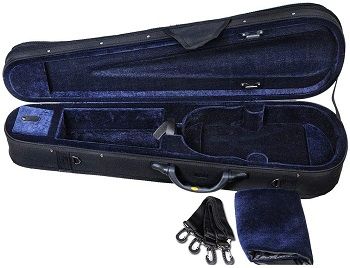
The outer fabrics of the cases should have a waterproof canvas or other water-resistant material, so you’re able to carry your instrument during all weather conditions. Carrying cases with wooden exterior also have a layer of water-resistant paint or other finish.
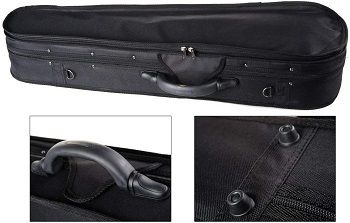
The best interior has different compartments so you can also carry other accessories with you such as bow, rosin, string sets, violin mic, etc. The inner structure should be soft and padded to provide support for the violin. The lightweight design and ergonomic carrying handle are desirable user-friendly features.
Conclusion: Most Important Parts And Accessories You Should Have
Each part very important for the violin to function properly. However, you should always have an additional string set so you can replace them when needed. Carrying case and bow are essential accessories for your violin. The other two accessories that you should have are violin rosin and humidifier for high-quality sound and instrument maintenance.
Read the review on the best music stand for the violin and get more info on another cool accessory that could be useful for you. If you want to learn more about the different violin models, check out this best violin for sale review with a buying guide. To learn more about high-quality models with unique design, read this article on the best electric violin offer.